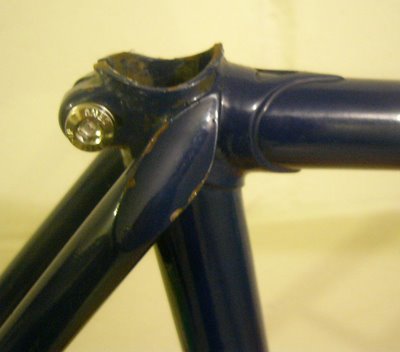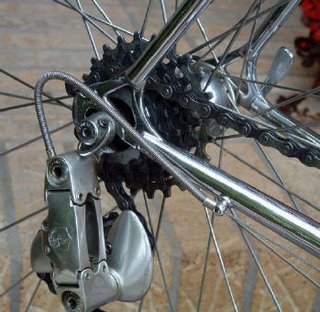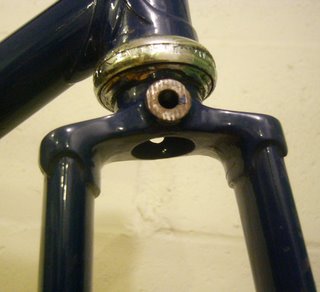
(Or is it the Physics of Steering?)
Roll a wheel or for that matter any round flat object even something as small as a coin on a flat surface and it will roll in a circle. It will continue rolling in ever decreasing circles until it finally falls and settles in one spot. This is a demonstration of the law of gyroscopics. That a spinning wheel will remain upright as long as it keeps spinning.
Most people know that this is what keeps a bicycle upright while in motion and if you stop you fall over as all cyclists do at least once in their lifetime. Also a spinning wheel (Or rolling coin.) as it looses momentum and starts to fall it will turn in the direction it is falling, which is why it rolls in a circle.
This law of physics gives a bicycle a simple built-in self steering capability. You can demonstrate this to yourself by holding a wheel in both hands by the spindle and spinning it. The first thing you will notice is that the wheel wants to stay upright in the same plane, demonstrating the first law mentioned in the opening paragraph.
If you forcibly move the top of the wheel to the left or right as it is spinning it will also turn in the direction you are leaning it. Just as a rolling coin will turn in the direction it is falling. So as you lean a bicycle into a corner it will steer itself around the corner. Let’s not forget the rear wheel. Although it is in a fixed position within the frame and cannot turn, it is still spinning and leaning therefore assisting in steering the bike around the corner.
This also explains the importance of a frame being straight with both wheels in the exact same plane. If a frame is twisted one wheel is always leaning and therefore always steering the bike in that direction. In normal riding conditions you may not even notice this as you will automatically and subconsciously correct this by steering in the opposite direction. But try riding hands off and the bike will pull to the left or right. Make sure you are on a level surface as a camber in the road will also cause you to move in that direction.
There are some who argue if it is the gyroscopic motion of a spinning wheel that keeps a bicycle upright, how come it is possible to ride at a slow walking pace? The answer is that it is not all gyroscopics, it is balance. The law in balancing anything is that the center of gravity of the object be directly over the point of contact with whatever the object is balancing on. In theory it should be possible to balance a golf ball on a pin head.
Someone walking on a high wire, as they start to fall to the left will shift their body, therefore their center of gravity to the right. Balancing a broom on your hand is a relatively easy trick because you simply move your hand in the direction the broom starts to fall keeping your hand directly under the broom’s center of gravity.
Have you noticed also that it is easier to balance a broom on your hand with the head of the broom up, than it is to balance a lightweight stick on your hand? The center of gravity of the lightweight stick is somewhere in its center, whereas the upturned broom has a center of gravity near the top where the head is.
A bicycle and rider has a high center of gravity; the bike can be twenty pounds or less while the rider is a hundred pounds or more. Center of gravity is somewhere in the middle of the rider, three feet or more from the ground. And just like the high center of gravity of the upturned broom, this works in favor of the bicycle and rider when it comes to balancing.
When riding very slowly, as the bike and rider fall to the left the bike turns to the left. The rider corrects this by steering to the right, then back again as the rider starts to fall in the opposite direction. What the rider is doing is moving the bike from left to right under them just like moving your hand under the upturned broom. And just like the simple broom balancing trick there is no conscious thought process to this, it is automatic.
 Tue, March 21, 2006
Tue, March 21, 2006 






 Dave Moulton | Comments Off |
Dave Moulton | Comments Off | 





















